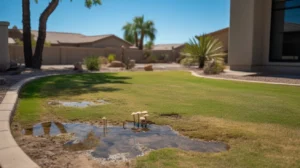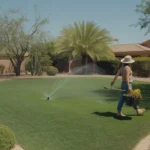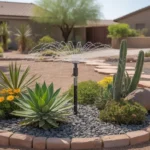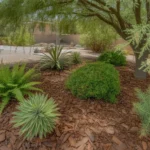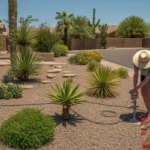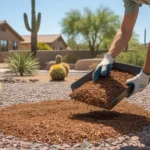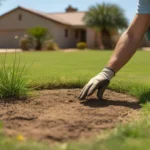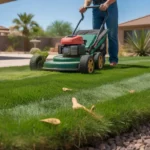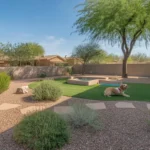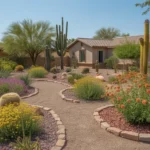As the scorching summer sun beats down on Gilbert, it’s tempting to crank up the sprinklers and give your lawn a heavy drink. After all, more water equals a healthier lawn, right? Not quite. Overwatering your lawn in the summer can actually do more harm than good, leading to a host of problems that can leave your grass looking worse for wear. Let’s dive into why summer is the worst time to overwater your Gilbert lawn and what you should do instead. 🌱
The Dangers of Drowning Your Lawn
While your lawn does need more water in the summer to combat the intense heat and dry conditions, there’s a fine line between just enough and too much. When you overwater, the excess moisture can suffocate your grass’s roots, depriving them of the oxygen they need to thrive. This can lead to shallow, weak roots that are more susceptible to disease, pests, and drought stress.
Overwatering also creates the perfect environment for fungal growth, which can cause unsightly patches of discoloration and even kill off entire sections of your lawn. Common culprits like brown patch and dollar spot thrive in moist, humid conditions, and once they take hold, they can be tricky to get rid of. Plus, all that extra water can wash away valuable nutrients in the soil, leaving your grass hungry and struggling to grow.
To make matters worse, overwatering is a major waste of a precious resource in our desert climate. Gilbert’s water restrictions are in place for a reason, and by using more than your lawn needs, you’re not only hurting your grass but also putting a strain on the community’s water supply. It’s a lose-lose situation all around.
Signs You’re Overwatering Your Gilbert Lawn
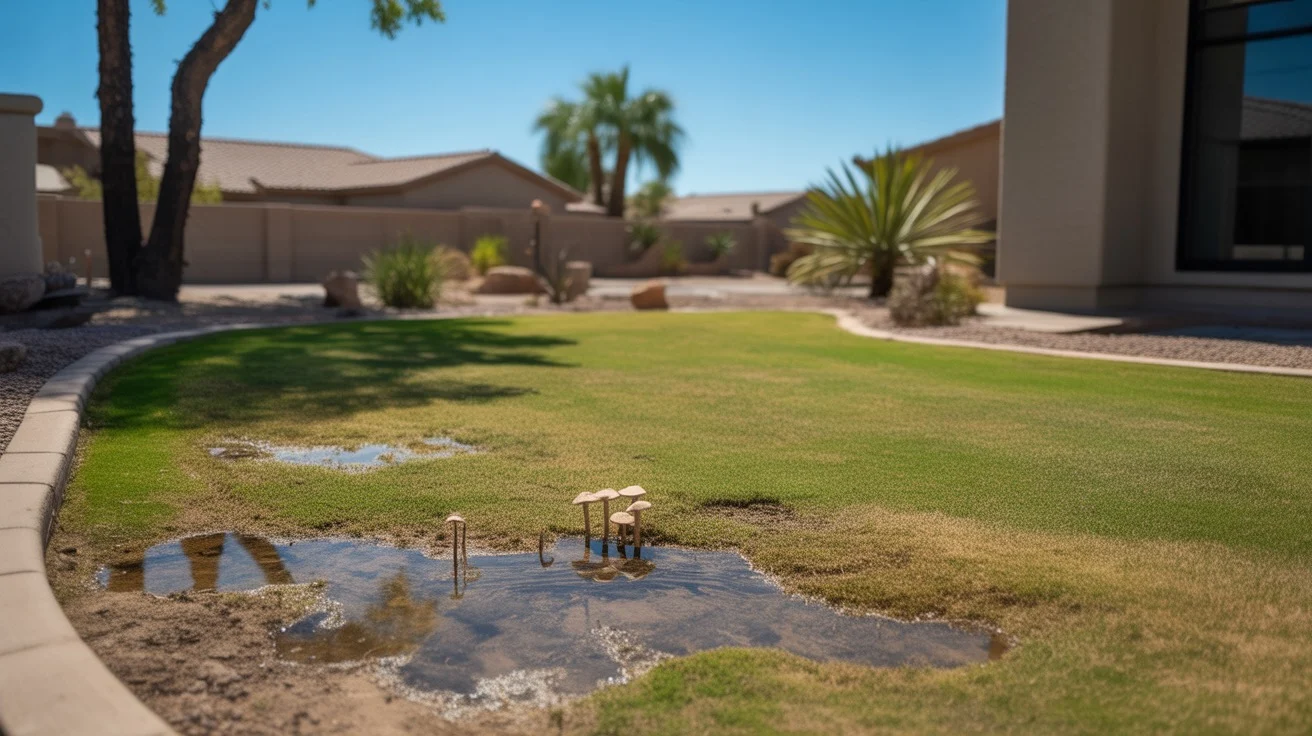
So how can you tell if you’re giving your lawn too much of a good thing? Keep an eye out for these telltale signs:
- Spongy, squishy soil that feels wet long after watering
- Mushrooms or other fungi popping up in the grass
- Yellowing or wilting grass blades, especially in patches
- Runoff or puddles forming on the lawn or sidewalk
- A sharp increase in your water bill
If you notice any of these red flags, it’s time to reevaluate your watering habits and make some adjustments. Remember, just because your lawn looks thirsty doesn’t mean it needs a flood—a little goes a long way, especially in the summer heat.
The Right Way to Water Your Gilbert Lawn in Summer
So what’s a Gilbert homeowner to do? The key is to water deeply and infrequently, giving your grass’s roots a good soak without drowning them. Aim for about an inch of water per week, split into two or three watering sessions. The best time to water is early in the morning, before the sun gets too intense, so the moisture has a chance to penetrate the soil without evaporating.
If you’re not sure how long to run your sprinklers to achieve that inch of water, try setting out a few empty tuna cans or rain gauges around your lawn and timing how long it takes to fill them up. You can also invest in a smart irrigation system that adjusts based on weather conditions and soil moisture levels, taking the guesswork out of watering.
Another pro tip: let your grass grow a bit taller in the summer, around 3-4 inches, to shade the soil and conserve moisture. Taller grass also has deeper roots that can better withstand drought stress. Just be sure to keep your mower blade sharp to avoid tearing the grass and inviting disease.
Nurturing a Healthy, Happy Gilbert Lawn
By avoiding the temptation to overwater and following these smart summer lawn care practices, you can keep your Gilbert grass looking its best all season long. Remember, a healthy lawn is a resilient lawn, and by working with nature instead of against it, you’ll be rewarded with a lush, green oasis that can stand up to whatever the Arizona summer throws its way.
So the next time you’re tempted to give your lawn an extra drink, take a step back and ask yourself if it’s really necessary. Your grass (and your water bill) will thank you for it. With a little know-how and some TLC, you can have the envy of the neighborhood without wasting a drop. 🌿

